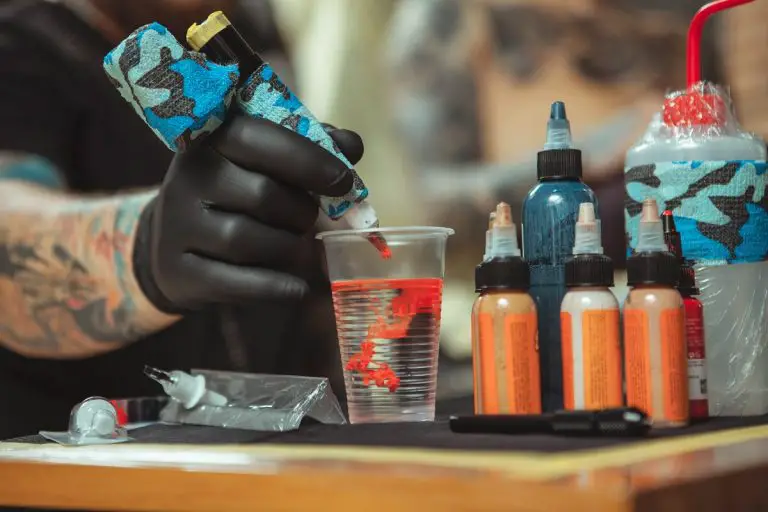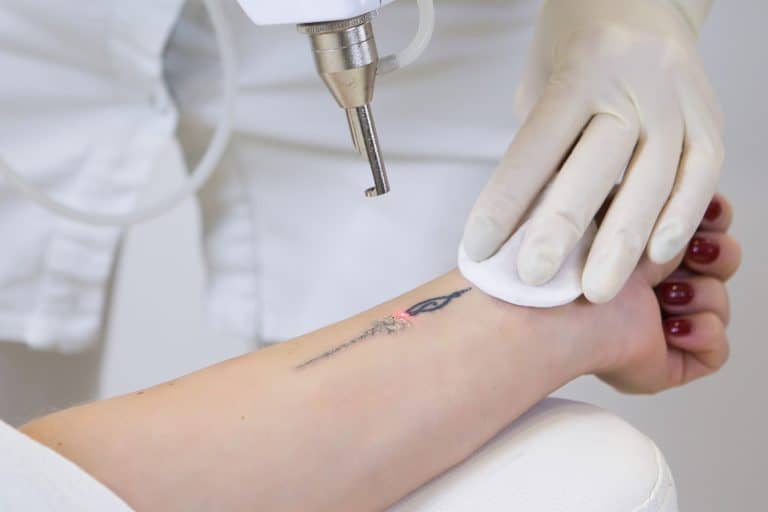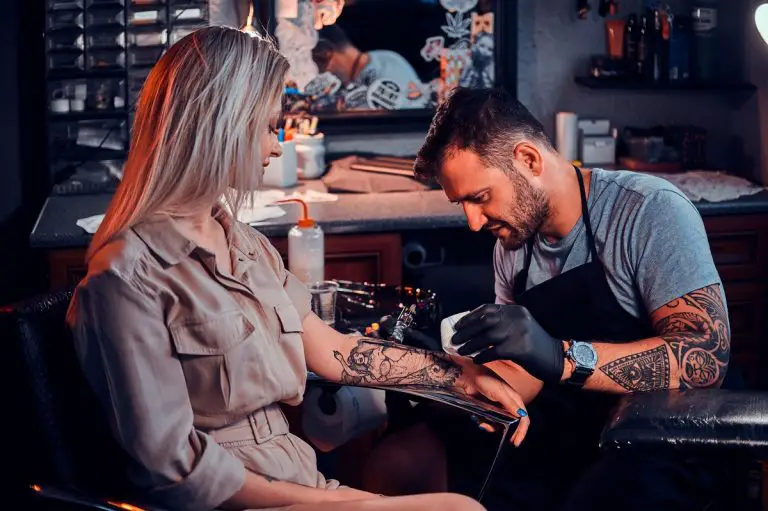Ink Poisoning: Is It Possible and How Do I Know If I Have It?
Tattoos have become so widespread that many people don’t really think about how they affect our skin and body. As you may know, no tattoo would be possible without ink, and no ink could be created without a concoction of different chemical substances and compounds.
So, why is it that we take tattoos so lightly when we literally wound our skin and inject ourselves with chemicals completely willingly?
Not to scare you or anything, but tattoos can be pretty dangerous and traumatizing to our bodies. So much so that one of the reactions to a tattoo is ink allergy or ink poisoning (out of many other reactions).
In the following paragraphs, we’ll take a look at the issue of ink poisoning, whether it is possible to get and how it manifests. So, if you’re curious about this potential issue, and you’re a tattoo enthusiast, then keep on scrolling!
Ink Poisoning: 6 Things You Must Know
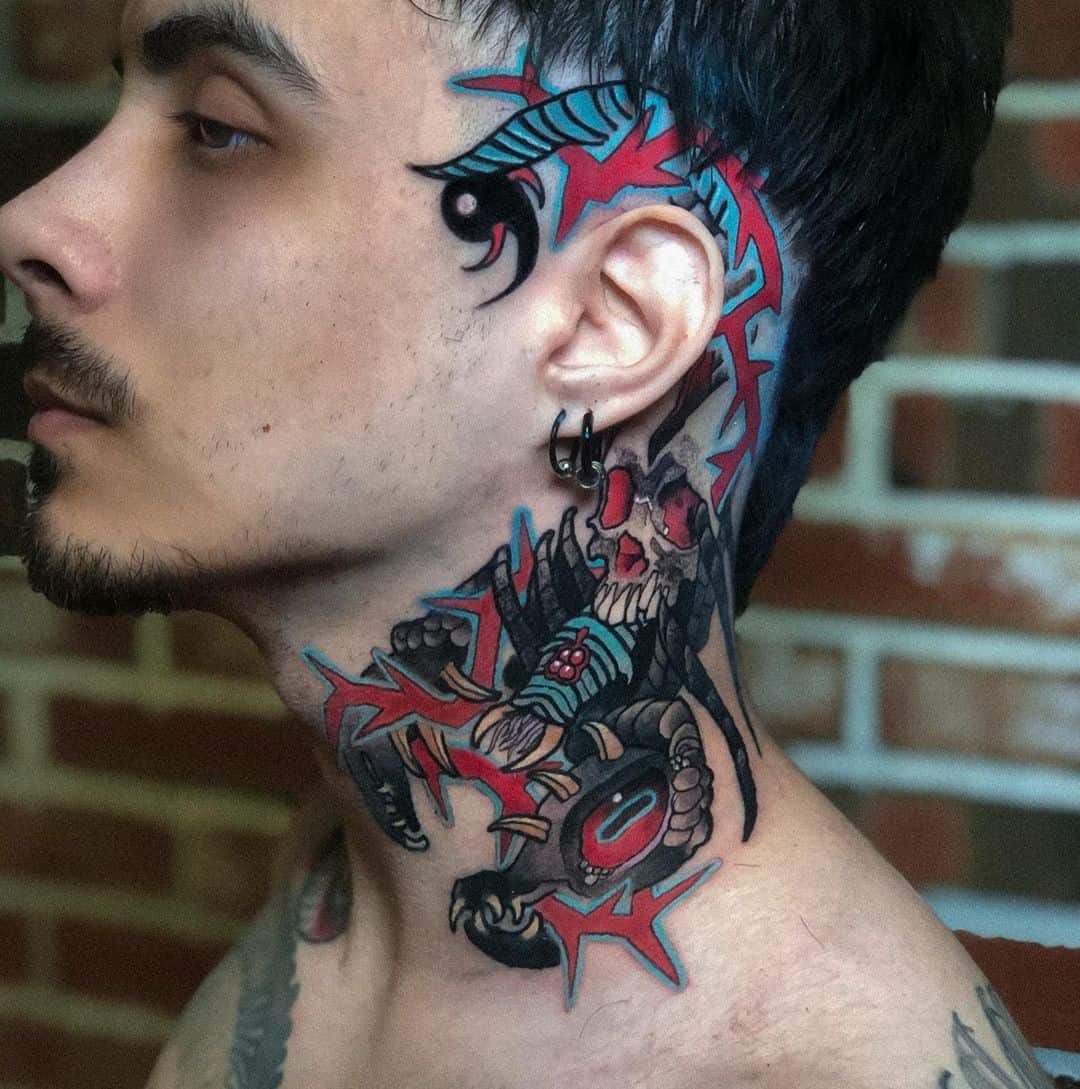
1. What Is Ink Poisoning?
Many associate ink poisoning with external factors, like dirty, unsterilized tattooing tools, or even mistake it for a tattoo infection. However, ink poisoning doesn’t have to do with any of those things. As the issue itself indicates, ink poisoning is only related to the ink used in the tattooing process.
Now, the topic of tattoo ink has been a part of a general tattoo safety discussion for years now. The problem is that no ink in the USA is FDA approved, not standardized. So, the issue extends, or to be more specific, stems from the very ingredients used to make a tattoo ink; ingredients you would otherwise never put in your body.
So, ink poisoning is simply a case where someone gets poisoned by tattoo ink!
2. Why Does Ink Poisoning Occur? – Ink Ingredients and Body Reactions
As we’ve established, the problem lies in the ink, or to be more specific, in the ingredients used to make ink. If you’re not familiar with these ingredients, don’t worry. A lot of people, even tattoo artists, aren’t exactly sure what’s in the ink they use or get tattooed with.
However, research has shown that the main components found in tattoo ink are toxic chemicals and heavy metals, which are the main culprits in cases of ink poisoning. Furthermore, approximately more than 10% of all unopened tattoo ink bottles are already contaminated.
So, which ingredients are used to make tattoo ink?
Well, some of them include carbon black, cinnabar, iron oxide, titanium oxide, cadmium, chromium, nickel, lead, manganese, denatured alcohol, antimony, beryllium, different kinds of fillers, even sunscreen, rubbing alcohol or animal fat and oil.
The list of the toxic chemicals and heavy metals goes on, and the majority of them can be found on the EPA list of the common causes of allergic reactions, infections, and cancer.
Red ink is considered to be the most toxic out of all the inks. It alone can contain cinnabar, iron oxide, cadmium, denatured alcohols, and other ingredients that directly cause infections and skin cancer.
It is essential to mention that to create shades of different pigments, the inks are introduced to a white pigment, which contains titanium oxide (TiO2). This ingredient alone can contribute to ink poisoning, delayed tattoo healing, tattoo elevation, and skin hypersensitivity.
Now, all of this is super informative and good to know, but these ingredients must come in pretty small amounts. So, why are they causing poisoning?
Well, the real issue starts when the ink is placed in the dermis of your skin, permanently. The body recognized these elements as foreign and tries to get rid of the excess ink particles.
However, it cannot get rid of them completely, ever. Those particles, and toxic compounds, travel around your body (by entering the lymphatic system or the bloodstream) forever, or until you get rid of a tattoo.
So, to tackle the issue at hand, the immune system tries to fix the damage, but, in case the immune system is weaker or impaired, it cannot prevent the toxic particles to cause reactions, like ink poisoning, allergic reactions, or infections.
3. What Are The Symptoms of Ink Poisoning?
One of the reasons why people mistake ink poisoning for ink allergies or infection lies in the symptoms, which are pretty similar. However, because in the case of ink poisoning, the toxic ink enters the lymph nodes and other body parts, the symptoms become much more serious and persistent. Depending on the degree of poisoning, the symptoms include;
- Tattoo swelling, and swelling of the surrounding area
- Lymph nodes swelling
- Increased joint pain and body pain/aches
- Increased body temperature, fever, and chills
- Irritation and rashing of the tattooed area
- Nausea and vomiting
- Headaches
- Prolonged or delayed tattoo healing
4. What To Do In Case of Potential Ink Poisoning?
Since some symptoms of ink poisoning are similar to those of tattoo infection, it is best to seek medical help to get a proper examination and diagnosis. Such symptoms often require medical treatment as well, so make sure to see your general practitioner.
Make sure to also contact your tattoo artist and ask for the brand of ink they used to tattoo you. This could also help the doctor, and your tattoo artist, identify the toxic particles in the ink that trigger poisoning and such an immune system response. Make sure to also inform your doctor about the color of the ink and any other information that could be helpful in resolving the issue.
5. How To Prevent Ink Poisoning?
The information so far hasn’t been too optimistic, we’re well aware of that. However, we must emphasize that cases of ink poisoning are pretty rare, and even when they do occur, they’re properly and successfully treated. So, you shouldn’t be scared of getting a tattoo. However, if you think that ink poisoning can happen to you, here’s how you can prevent it;
- Always get tattooed by a reliable, professional tattoo artist. High-end tattooists use high-quality ink, so the chances of ink poisoning or ink allergies are minimized.
- Ask your tattoo artist to take a swab test; this will help them take notice of any potential allergic reaction to different ink colors and types.
- Get checked for allergies with your doctor prior to getting a tattoo. If the test shows you’re allergic to certain compounds, make sure to inform your tattoo artist about it as well.
- Make sure to take care of yourself, your body, and your health. Eat proper, healthy meals, take vitamin supplements to boost your immune system, and drink plenty of water. Exercising and physical activity is also essential for keeping your body healthy and resilient to toxic compounds, like those found in ink.
- Ultimately, if none of this sounds convincing, and if you still fear tattoo ink and ink poisoning, then all you can do is cancel the tattoo appointment and not get inked.
Tattoo Ink Poisoning FAQs
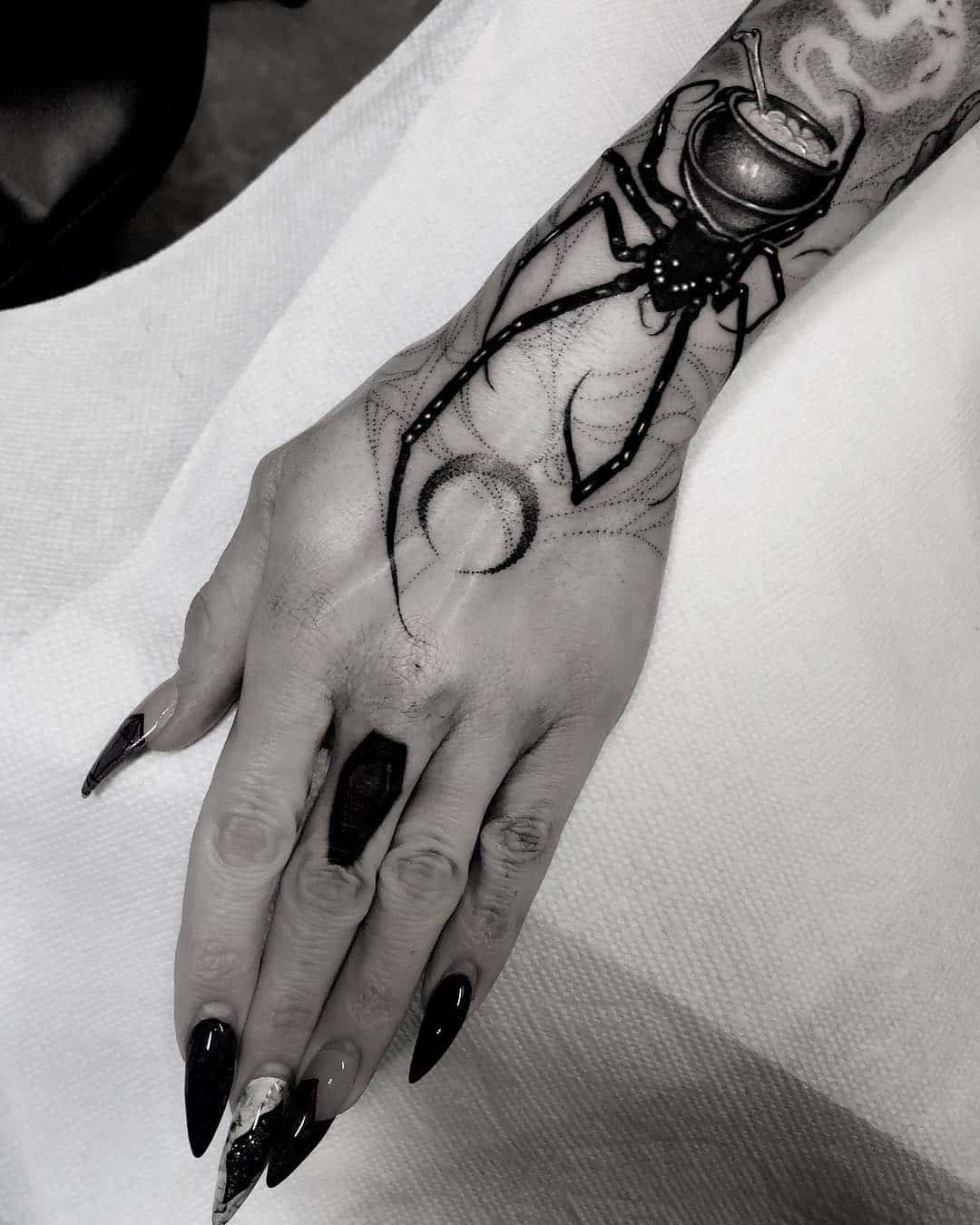
What Happens If Tattoo Ink Gets Into Your Blood?
Excess ink generally ends up in the bloodstream. This is a way of your lymphatic system trying to get rid of the foreign or toxic compounds in the body. However, as the ink travels via blood, it and becomes stuck in certain body areas, like the liver for example. That is why ink (especially low-quality, toxic ink) can be pretty dangerous.
Is Tattoo Ink Carcinogenic?
Because tattoo ink contains harmful and toxic compounds, which are considered by the EPA to be cancerous, it is safe to say that tattoo ink can be carcinogenic. When the ink travels through the body, it manages to come across the lymph nodes.
As a result, the toxic compounds cause oxidative stress, which results in inflammation. The inflammation damages the cells and the immune system, which then results in cancer and other diseases.
How Long Will Tattoo Ink Remain In Your Blood?
Generally speaking, the ink particles will remain in your blood as long as you have a tattoo. However, the amount of ink particles in the blood does subside over time. The highest concentration of ink in the blood is in the period when the tattoo is healing; meaning, the first 2 to 4 weeks.
Can Vegan Ink Cause Poisoning?
It is true that vegan ink is a better choice than regular ink, in some way. For example, vegan ink doesn’t contain animal-originating products like animal fat and oil, animal gelatin, etc.
However, for vegan ink to still be ink, and usable for tattooing, it contains certain toxic ink carriers (like denatured alcohol or formaldehyde, both causing poisoning and irritation), or heavy metals. Just like the regular ink, vegan ink isn’t standardized or FDA approved, so until then happens, we cannot say that vegan ink is any safer than regular ink.
Also Read:
Final Thoughts
Ink poisoning sounds terrifying, right? But, it is pretty uncommon and there are many ways you can prevent it from occurring. However, if you think ink poisoning is a possibility for you, make sure to see an allergist and get tested to see if any of the known ink ingredients could cause an allergic reaction or poisoning. Other than that, to be completely safe, you can simply not get a tattoo.
- Safe, non-toxic plant-based temporary tattoos made with 100% high-definition printing for a realistic look without the pain
- Easy to apply and remove - just stick for 20 seconds then take off
- Set includes 5 sheets with 17 fun, delicate designs like hearts, cats, smiles, suns, moons, and more
- Waterproof and long-lasting - stays on up to 2 weeks of wear
- Fashionable for women, men, girls and boys
- Place on arm, wrist, neck, leg, finger, waist, foot and more
- Great for parties, birthdays, and showing your unique style




